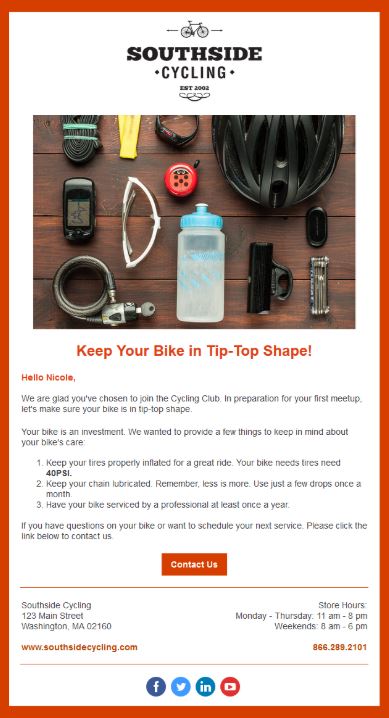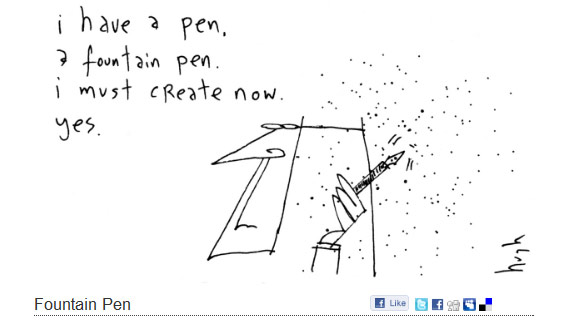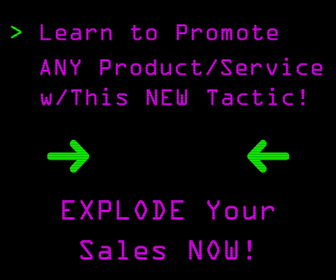 The more value customers receive in email campaigns, the more likely they’ll visit a website and also look forward to receiving follow up emails, whether they’re sent daily, weekly, or monthly. When they look forward to receiving emails, they’ll be more likely to take the actions a company wants them to take. Staying consistent with email marketing is essential; maximizing email marketing success leads to subscribers opening emails and clicking on links. Below are some ways on how to consistently provide value and thus maximize the value and earning potential of email marketing:
The more value customers receive in email campaigns, the more likely they’ll visit a website and also look forward to receiving follow up emails, whether they’re sent daily, weekly, or monthly. When they look forward to receiving emails, they’ll be more likely to take the actions a company wants them to take. Staying consistent with email marketing is essential; maximizing email marketing success leads to subscribers opening emails and clicking on links. Below are some ways on how to consistently provide value and thus maximize the value and earning potential of email marketing:
Segment Your Subscribers
Segmenting your subscribers gives you an edge over your competitors because it’s focused email marketing that targets specific groups of people. For example, you can use a segment of customers who purchased a book, and you think they’d be interested in another book. You can also target select subscribers who have yet to buy anything and test which products they may like more. Digital Marketing Institute discusses additional ways on how to segment subscribers below:
One of the most effective ways to increase the conversion rates of your emails is to segment your audience. It turns out that 77% of email ROI comes from segmented, targeted, and triggered campaigns that offer the right product to the right customer at the right time.
How do you segment your subscribers? By using a CRM tool like Infusionsoft, AgileCRM, or Hubspot that will allow you to track where subscribers came from, what campaigns they’ve interacted with, and how they’ve interacted on your website.
Over time these pieces of software are able to develop a very clear picture of each user, what their interests are, and the types of products or services that may actually interest them.
Once you have this understood, you can then target your subscribers with information on and offers for the right products at the right time to maximize conversions.
A great example of a business that segments is TravelZoo. This site offers fantastic travel deals all over the world – and segments their audience by location and interests. If you sign up and begin searching for deals from San Francisco, future emails will share deals exclusively from the Bay Area.
This activity ensures that people receive deals and offers that will actually be of interest to them, making them more likely to make a purchase, and less likely to unsubscribe.
Focus on the customer
Constant Contact says that when you focus on the customer, you are building value. Why? Because you’re figuring out what their needs are and then building on their needs going forward. Valuable content is essential if you want to keep their attention. If they like your content, they’ll keep coming back for more.
In order to provide value, you need to focus on the customer. It’s important to understand their needs and show you care.
Start by asking yourself this: “How am I going to meet my customers’ needs?” This will help you formulate content that your customers will benefit from.
It’s also important to remember that different customers will have different needs. Start by segmenting your list to group like contacts together based on their interests. By taking this extra step, you’ll be able to send targeted content that is even more valuable to each of your groups of customers maximizing the effect of your email marketing efforts.
Once you begin creating valuable content for the customer, you’ll have an edge over your competitors.
Here’s an example where Southside Cycling targeted customers who purchased a bike. They provide the necessary information to help them keep their bike in great condition. They really take the time to focus on the success of new customers in this example:
Drip Campaign
A drip campaign is another way to target customers using a series of emails that respond according to their behavior. For example, if a customer doesn’t purchase a product or open your email you designed in MailChimp, for example, you would set up an email trigger. The next email would use a different technique to try to get subscribers interested.
Similarly, for customers who purchased a product, the following email would encourage them to buy something else or offer them valuable advice about their newly purchased item. Marketo has more on how a drip campaign can improve your marketing efforts:
A drip campaign is a set of scheduled marketing emails sent out automatically after a particular trigger. These campaigns can be used to turn prospects into leads, turn leads into customers, and turn customers into highly engaged customers. Drip campaigns have shown to result in up to a 98% conversion rate for qualified leads.
Drip campaigns can be configured to respond to customer behavior triggers like a new subscriber, a resource download, or a request for a demo. When this action is recorded in the system, it triggers your drip campaign workflow, which sends a follow-up message after a set time interval.
A trigger can also be a passive customer behavior, such as not opening your last few emails, not logging in to use your service for a while, or downloading a product without downloading the tutorial or an important related resource. These types of drip campaigns can help re-engage customers who were moving through the customer lifecycle but have somehow gotten “stuck.”
A drip campaign paired with marketing automation can help you:
Move leads through the marketing-sales funnel faster.
Educate your leads about your product and your industry.
Give your leads more opportunities to engage with your content.
Give your sales team more data about “warm” leads.
Re-engage customers that have been inactive.
Encourage customers to try other parts of your product or related products.
Reward your most engaged customers with special offers or inside info.
Drip marketing is one component of lead nurturing, the process of developing relationships with buyers at every step of the buyer’s journey. Segmenting your audience and creating a drip marketing strategy that speaks to these different segments is a great way to listen to the needs of your prospects and provide the answers they genuinely need.
Follow Through
Neil Patel mentions that it’s essential to follow through. For example, if you tell your subscribers you’re going to send out a weekly newsletter, then you need to follow through. If you don’t and subscribers are anticipating an email and don’t receive one, they’re going to think that you may not follow through in other ways. An example would be subscribers who sign up for career coaching might think you won’t stick to a schedule or follow through on appointments.
Email marketing is all about expectations, and it’s up to you to set them. If your call to action is strong, and your follow-up is consistent, then you can count on a positive campaign. However, if you promise to send one email per week and end up only sending them monthly, then you’re setting yourself up for failure. Similarly, if someone is expecting critical product updates and you don’t’ deliver, then they are likely to be just as upset.
Because I asked, I expect Hugh MacLeod to email his cartoons daily.
This is why the first follow-up email is so crucial to the success of your email marketing efforts. Almost all email service providers give you the option to create an autoresponder sequence, and it’s imperative that you take advantage of it.
The initial follow-up email should be sent immediately as a way to introduce yourself and detail what you plan on doing with your new subscriber’s email address. It’s better to be long-winded and detailed than it is to be quick and unobtrusive, but if you can pull off quick and concise then more power to you.
From here, it’s simply a matter of living up to their expectations.
Remind Shoppers They Left Something in Their Cart
Shopify brings up an excellent idea which is to send out a follow-up email if shoppers leave something behind in their cart. Some shoppers will abandon their cart to see if you send them a follow-up email with a discount. Whereas that might sound like a good strategy, Shopify offers other suggestions on how to get shoppers to come back and complete their purchase.
Most companies distribute discounts and promo codes immediately after a cart’s abandoned, and savvy shoppers have caught on. Some will abandon just to see if you’ll send a discount. If your go-to strategy is using offers, you’re throwing your margins to the wind.
Instead, use the first email as a simple reminder: Tell shoppers that they left something in their cart. Show them a picture of the product if your template allows. Add low-cost benefits, and include a link that takes them directly to checkout.
Hello Merch keeps it simple in this text-only cart abandonment email. This type of approach is particularly great for bootstrapped businesses. If you only have the resources to design a single beautiful email or create a series of text-only emails, you’ll likely get more bang for your buck with the latter.
Sources: Constant Contact, Digital Marketing Institute, Marketo, Neil Patel, Shopify
CHALLENGE Yourself to Profit!
Free Download: Build Your Profit-Generating Online Business With This Free Blueprint
Sign Up, follow the easy steps and You'll get the tactics, strategies & techniques needed to create your online profit stream. It's free!





